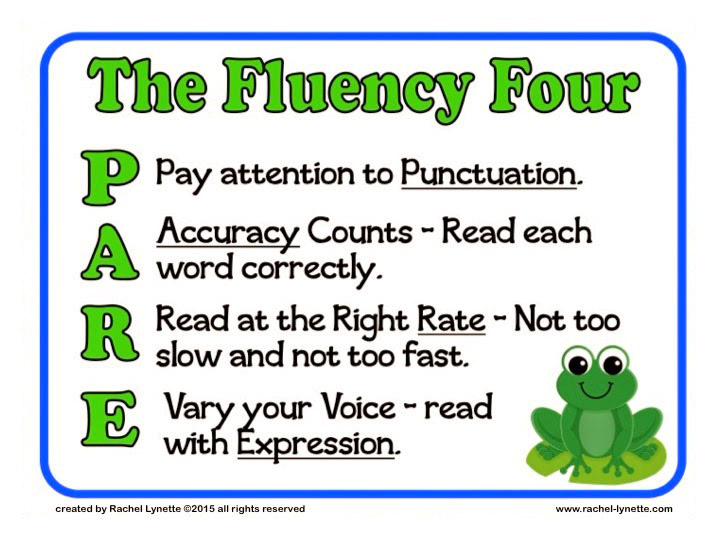What is reading fluency?
We often refer to reading as a single skill and subject that our children are taught and must master to succeed. However, reading is an incredibly complex process that is a confluence of many different skills. Each of these skills must be mastered before reading will become “effortless.” A few of these separate skills include phonemic awareness, comprehension, decoding, phonics, and vocabulary. And then there’s fluency!
Reading fluency is the ability to quickly and accurately read a passage of text with expression. This means your child can read a sentence smoothly while recognizing most of the words. Fluent reading means your child will understand the sentence clearly, and be able to add expression to the words, making them more meaningful. They should add pauses when necessary, or for example let their voice lilt up at the end of a question, cueing the listener that it is a question that he’s reading.
A child who reads fluently can recognize words by sight and quickly group them into meaningful phrases that convey the message the words were intended to convey. When reading aloud, the fluent reader doesn’t stop and start, or have to sound out many words. Their pace is smooth with the natural cadence and expression normally used when talking. Someone listening to a fluent reader reader will understand clearly what the author of the words meant
The Three Components of Reading Fluency
Just as reading is broken down into component skills. Reading fluency is broken into its components/skills. Below are the three components of reading fluency. You may not have heard these terms before, but the ideas behind them are fairly simple.
Prosody – This means your child is reading with the appropriate intonation and phrasing, giving listeners the clues they need for understanding. This is the “expression” mentioned before.
Accuracy – Accuracy simply means that your child is reading each word correctly. They don’t say “these” when the word is really “this,” for example. Reading each word accurately makes fluency possible.
Automaticity – This refers to the ability to recognize words immediately, without having to “sound them out” or ask for help. Reading with automaticity means they can read through a complete sentence smoothly and without choppy-sounding stops and starts
Why is this important?
Fluency is the bridge between sounding out individual words and truly understanding them. It’s the gateway to comprehension and understanding. When your child can read fluently, he no longer has to focus on decoding each and every word; he can now concentrate on what the words he’s reading really mean. If your child has to “sound out” each word, or puzzle over its definition, by the time he gets to the end of a sentence, he may not even remember what he’s read. Being able to smoothly and quickly read a sentence from beginning to end allows him to “hear” all the words and understand what the sentence means and how it adds to the story or passage he’s reading.
Fluency is key to understanding because the fluent reader reads with expression. Why is expression so important? Inflection tells us when a question is being asked, the rhythm of the words and our pauses tell us when one sentence stops and another begins. Expression tells us whether the author is speaking directly to us or whether the words are being said by a character in the story. Pauses from crucial commas can even give a sentence more than one meaning
How to help your child improve their fluency
Practice, practice, practice. The best way to help your child with their fluency is PRACTICE. Here are a few fun activities that you can also try with your child.
Challenge them to go faster – Let your child race against the timer while they read a short passage. Choose a passage at, or even a little below, their reading level – ideally something that they have read before. Success is important while your child is improving his reading fluency. Remember, too, to make it a game. Make sure to question them after they get done, did they actually understand what they read, did they pronounce the words correctly?
Play a part – Reading parts in a simple play is a great way to practice reading with expression. Your child will have the chance to “become” the character they are playing. Let them choose the character, and read the other parts yourself. The interplay between the characters will naturally bring out expressive reading.
Read along with an audiobook – Children love audiobooks. But, rather than just listening to a favorite recording, have a hard copy of the book and have your child read along with it. This allows them to mimic the speed, pacing, and expression offered by the recording. Choose books they have already heard more than once. Trying to keep pace with a story that they have never heard before is very frustrating.




